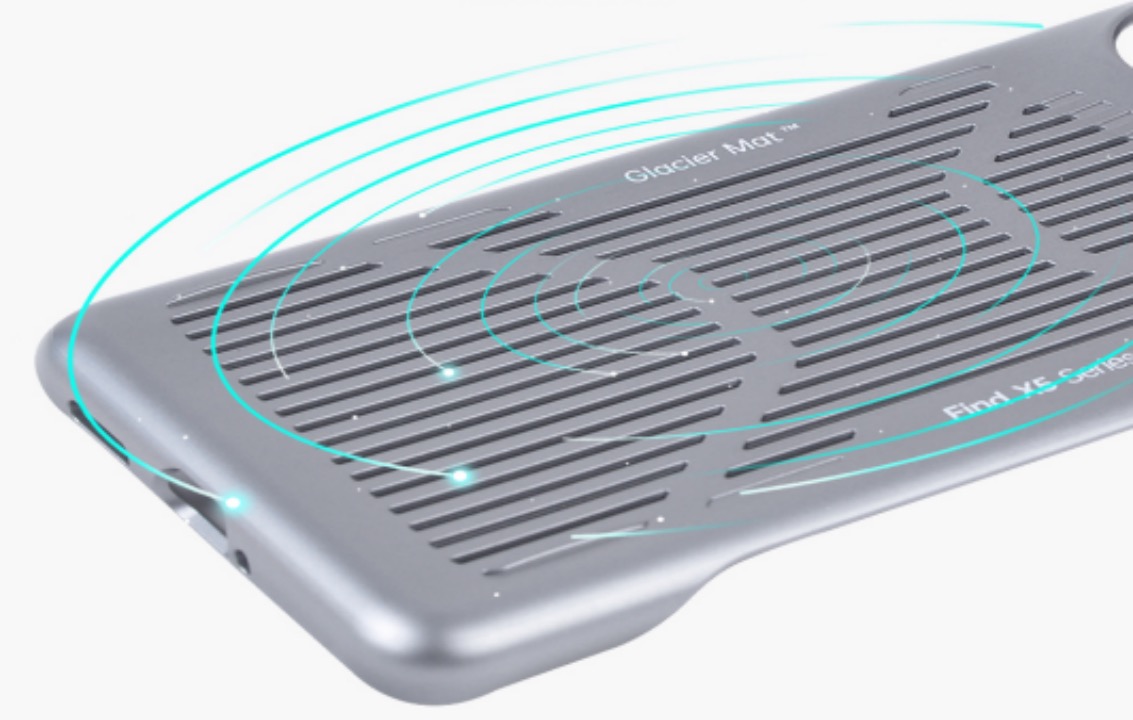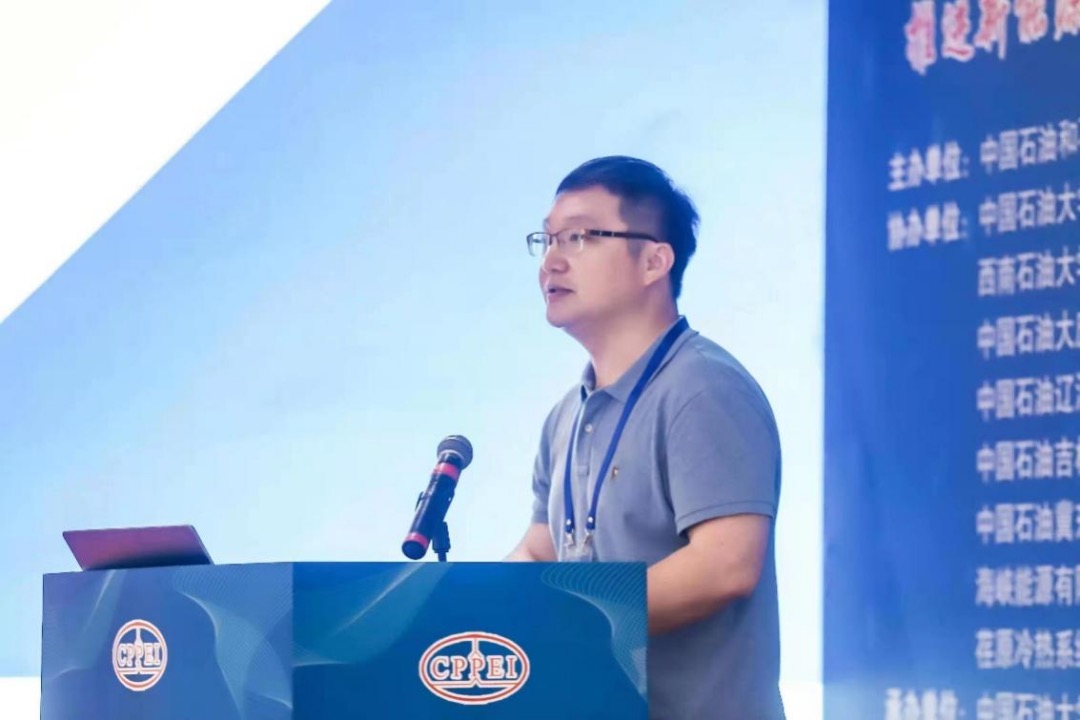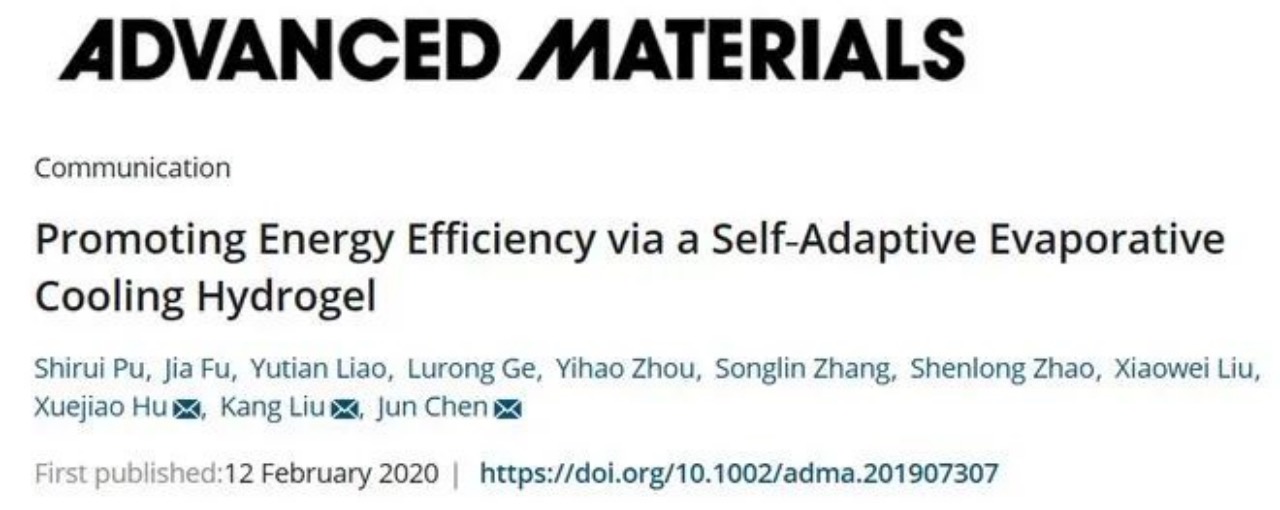Recently, an ice skin cooling cell phone case jointly developed by the Nano Energy Lab of Wuhan University’s School of Power and Mechanical Engineering and OPPO Thermal Lab was debuted at the OPPO Find X5 Series Launch Event. The technology, based on the research of Professor Hu Xuejiao and researcher Liu Kang’s team, has been applied to phone cace making and realized through mass production.
This new case is made of Glacier Mat, a new material for heat dissipation, which takes away the heat from the back panel of the phone by evaporating water. After installing the cooling case, the surface temperature of a phone is nearly 2-3℃ lower than the same bare phone under the same scenario after one hour of heavy use. After reducing the temperature, the picture quality and frame rate of the phone are also significantly higher than the bare phone, further improving the user experience.

The ice skin cooling cell phone case
In fact, as the director of the R&D team and the first generation of the iPhone chip package thermal designer, Prof. Hu realized the huge pressure on the heat dissipation abilities of phones as early as 2006. With his team, he developed the idea of studying the “fever-reducing” phone case and applied for the relevant patent.

Prof. Hu at a conference
Different from computers or other large electronic devices, smartphones cannot be equipped with fans for active cooling, only leaving passive heat dissipation as an option. However, two common methods of passive heat dissipation, natural convection and radiation, both have theoretical upper limits in classical textbooks and cannot meet the heat dissipation needs of the phone. Therefore, the research team decided to change their mind. Enlightened by the phenomenon of human sweating in nature, the research team proposed that it is possible to make the phone case “sweat” and take away the heat through the evaporation of water. This idea was very innovative, but the biggest difficulty was how to automatically suck back the water in the air.
After the research team’s continuous exploration, the main research tasks were finally completed in 2019. The technology realized free retraction and release of water, and the research results of the passive hydrogel film heat dissipation technology designed by the team were published online in the leading international journal Advanced Materials in 2020. It was the publication of this paper that attracted the attention of OPPO Thermal Lab, promoting the application of the technology.

The paper of the team
From 2006 to 2022, from the proposal of an initial idea to the final mass production of the “fever-reducing” phone case, 16 years have passed. In those years, the research team failed again and again, but made unremitting efforts to make progress bit by bit. In Prof. Hu’s heart, the success of the research is due not only to the fundamental demand of the market and financial support from government and business but also to generations of students dedicated to tackling the key problems.

Group photo of the R&D team
“Scientific research cannot be done by one person but must rely on the power of a team,” Prof. Hu emphasized. “Students will naturally graduate, so many of them can only stay in the project group for 5-6 years out of 16. Therefore, the success of this research is not the efforts of a few people, but the persistence of a generation of scholars.”
“When I saw the logo of WHU appear on the screen at the end of the launch event, I was really touched.” Prof. Hu added, “Through more than ten years of hard work, we have done what the world has not done and achieved absolute leadership in the technology. We can do these things by ourselves, and we do not need to rely on others. In summing up this research in one sentence, we have done one thing that will be remembered.”
Photo by School of Power and Mechanical Engineering of WHU
Edited by Li Hefeng, Qin Zehao, Qin Shihan, Zou Xiaohan, Xi Bingqing, Sylvia


